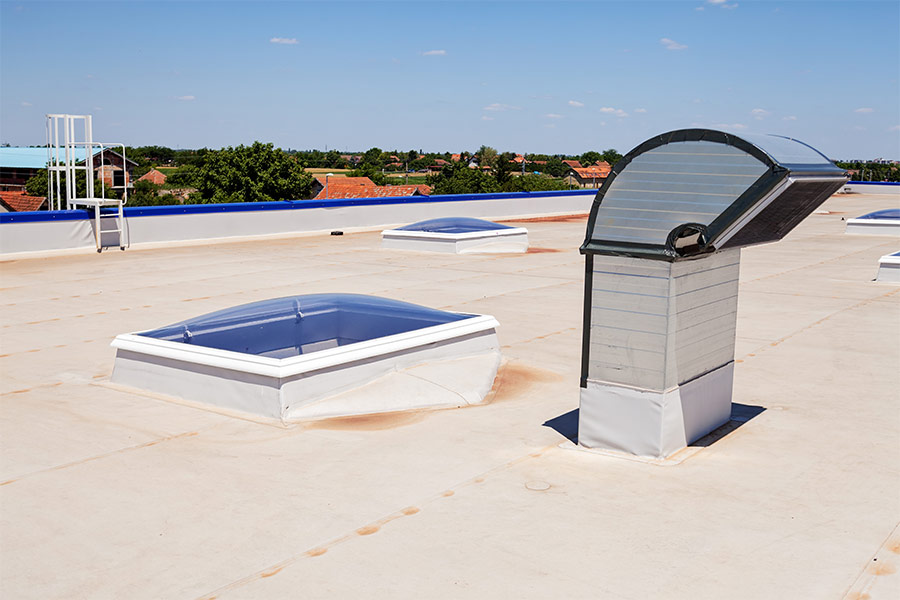If you own or operate a hydraulic spray rig, you know how important consistent maintenance can be. As far as roof coating applications go, these machines are incredibly useful and extremely efficient. However, one thing you may not have considered is how cold weather affects the performance of your rig. In this post, we feature an article from Sprayer Depot in which they answer some common sprayer winterizing questions submitted by their customers.
Winterizing your sprayer is not an option, it’s a requirement. Before winter starts or after the end of spraying season, make sure you winterize your sprayer before you put it away. We know we constantly talk about seasonal maintenance but we just can’t stress it enough, performing regular maintenance will ensure a long life for your sprayer.
In this short Q&A, we answer the most common sprayer winterization questions we have received from our contractors.
Should I perform maintenance before winter starts?
You definitely should! Winterizing your spray equipment is an important step to ensure the performance of your sprayer.
When should I winterize my spray equipment?
You want to winterize your sprayer before temperatures drop below freezing. In areas like Florida, where the temperatures don’t drop too much, you should winterize your sprayer before you store it at the end of the season.
What materials do I need to winterize my sprayer?
You will need clean rags, a bristle brush, clean water, pump oil (see manufacturer’s recommendations), antifreeze, an all-weather tarp, and a tire pressure gauge (if your sprayer has wheels).
As long as I wear gloves while cleaning the sprayer I’ll be fine, right?
Wrong. Personal Protective Equipment (PPE) is very important when handling any type of pesticide, herbicide or other chemicals. Make sure to wear a long sleeve shirt, pants, eyewear, respirator or mask, gloves, and boots.
Which steps should I follow to properly winterize every part of my spray equipment?
Follow these 5 easy steps:
- Flush the system with clean water
- Drain the tank and open all valves; Use compressed air to blow out any liquid from solution lines
- Run the pump just long enough to ensure that the system is drained of water
- Run antifreeze through the system long enough to reach any hoses and booms; We recommend diluting the antifreeze 50/50 with either water or windshield washer fluid
- Cover the sprayer with the tarp so that dirt, insects, etc. cannot enter the equipment
Should removable parts remain attached to the unit?
No. Store any removable parts like spray guns, nozzles, and strainers in a clean, dry place.
What about sprayers with a boom?
Just make sure to also include the following steps as part of your maintenance for the spray boom:
- Remove the boom feed hoses from the boom section valves
- Use compressed air to flush each boom
- Remove the nozzle tube end plugs and continue to blow out any water from the boom
- Remove and clean out any boom section filters
- Remove metal screens or fittings and store the parts in vegetable oil over the winter to prevent corrosion
- Ensure that your boom is free of water, lubricate any O-rings and re-install non-metal components
In order to properly install a fluid-applied system in an efficient manner, it is essential to have the best equipment on the market. We assist many of our Approved Contractors in the purchase process to ensure they are using the best equipment available; from roof coating installation equipment to moisture detection and mil thickness gauges. Please call our technical service department for details and pricing, or view our equipment information online.
Related Posts
August 22, 2023
Commercial Metal Roofing: 15 Things To Consider
When choosing a roofing solution for commercial properties, one option stands out as a symbol of…
July 18, 2023
Free Roof Inspection: Must-Have Resource for Building Owners
Maintaining the integrity and functionality of a commercial building's roof is vital for the safety…
June 26, 2023
Flat Roof Maintenance: 15 Tips for Protecting Your Investment
A flat roof is popular for commercial and residential buildings due to its cost-effectiveness and…



